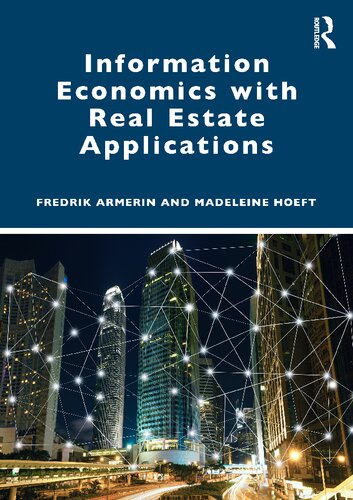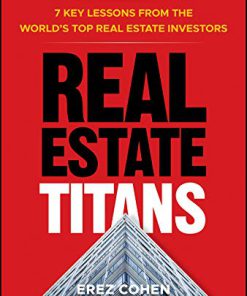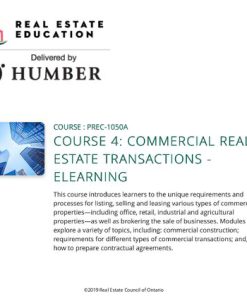Information Economics with Real Estate Applications 1st Edition by Fredrik Armerin, Madeleine Hoeft ISBN 9781032287744 1032287748
$50.00 Original price was: $50.00.$25.00Current price is: $25.00.
Information Economics with Real Estate Applications 1st Edition by Fredrik Armerin, Madeleine Hoeft – Ebook PDF Instant Download/Delivery: 9781032287744 ,1032287748
Full download Information Economics with Real Estate Applications 1st Edition after payment

Product details:
ISBN 10: 1032287748
ISBN 13: 9781032287744
Author: Fredrik Armerin, Madeleine Hoeft
Information Economics with Real Estate Applications provides the reader with an academic toolkit to understand strategic interactions of individuals and companies in a world of scarce resources and asymmetric information. Beyond theoretical frameworks and models, examples in the real estate and construction industry are used to illustrate the practical relevance of the concepts discussed. Property developers, brokers, construction firms and investment managers – as individuals or companies – make decisions in response to their clients’, customers’ and partners’ behaviours. To align conflicting interests and achieve optimal outcomes for individuals, companies and society at large, those interactions need to be governed efficiently. Using models from microeconomics and contract theory, this book helps the reader to analyse the complex relations between different industry stakeholders from the perspective of markets and organisations. Although it mainly targets students at the Masters or PhD level in real estate or similar subjects without previous knowledge in information economics, the general theory presented should be of interest to any student who wants an introductory text in information economics. At the same time, by building upon real-world examples, the book allows industry practitioners to reflect on and optimise their strategic decision-making in a more structured way.
Information Economics with Real Estate Applications 1st Edition Table of contents:
Part I Foundations
1 Basic microeconomics
1.1 Introduction
1.2 Consumers
1.2.1 Preferences
1.2.2 Utility and utility functions
1.2.3 Utility maximisation
1.2.4 Demand
The demand function of a consumer with a Cobb-Douglas utility function
1.2.5 Substitutes and complements
1.3 Producers
1.3.1 Costs
1.3.2 Profit
1.4 Markets
1.4.1 Competitive markets
1.4.2 Monopolies
1.4.3 Summary of different market forms
1.5 Welfare
1.5.1 Welfare for consumers and producers
1.5.2 Welfare on market level
1.5.3 Pareto efficiency
1.6 Literature notes
1.7 Exercises
2 Game theory
2.1 Introduction
2.2 Static games
2.2.1 Prisoner’s dilemma
2.2.2 Stag hunt
2.2.3 Chicken game
2.3 Dynamic games
2.3.1 Subgames
2.3.2 Subgame perfect Nash equilibria
2.3.3 Folk theorems
2.4 Literature notes
2.5 Exercises
Part II Market perspective
3 Oligopolies
3.1 Introduction
3.2 Cournot models
3.2.1 Symmetric Cournot models
3.2.2 Symmetric Cournot duopoly
3.2.3 Cartels
3.2.4 Symmetric general Cournot oligopoly model
3.2.5 Asymmetric Cournot models
3.3 Bertrand models
3.4 Stackelberg models
Concluding notes on oligopolies
3.5 Monopolistic competition
3.6 Measuring market concentration
3.7 Literature notes
3.8 Exercises
4 Strategic interactions
4.1 Introduction
4.2 Market entry strategies
4.2.1 Market conditions
4.2.2 An entry game – Part I
4.2.3 An entry game – Part II
4.2.4 Taxonomy of strategies
4.3 Literature notes
4.4 Exercises
Part III Organisational perspective
5 Models with randomness
5.1 Introduction
5.2 Randomness
5.2.1 Probabilities and random variables
5.2.2 Preferences over random payoffs
5.3 Risk
5.3.1 Attitudes towards risk
5.3.2 Coefficient of absolute risk aversion
5.3.3 Certainty equivalent
5.3.4 Optimal risk-sharing
5.4 Risk and uncertainty
5.5 Literature notes
5.6 Exercises
6 Contracts
6.1 Introduction
6.2 Theory of the firm
6.3 Principal-agent relationships
6.4 Contract types
6.5 Complete and incomplete contracts
6.6 Asymmetric information and opportunistic behaviour
6.7 Literature notes
6.8 Exercises
7 Hidden characteristics and adverse selection
7.1 Introduction
7.2 Separating and pooling equilibria
7.3 Hidden characteristics and adverse selection
A All sellers and buyers have full information
B Neither the sellers nor the buyers have full information
C The sellers have full information, and the buyers have no information
Final remarks
7.4 Methods to avoid adverse selection
7.4.1 Screening
7.4.2 Signalling
7.5 Literature notes
7.6 Exercises
8 Hidden actions and moral hazard
8.1 Introduction
8.2 Motivation in principal-agent relationships
8.3 Models with hidden actions
8.3.1 Effort-dependent revenue
8.3.2 Effort-dependent cost
8.3.3 Unknown cost function
8.4 First-best solutions
8.4.1 Effort-dependent revenue
8.4.2 Effort-dependent cost
8.4.3 Unknown cost function
8.5 Methods to avoid moral hazard
8.5.1 Contract structures and incentives
8.5.2 Information systems and performance monitoring
8.5.3 Trust and relationship building
8.6 Literature notes
8.7 Exercises
9 Property rights
9.1 Externalities
9.2 Coase theorem
9.3 Hold-up problem
9.4 Vertical integration
9.5 Literature notes
9.6 Exercises
Appendix A Additional material
A.1 Derivatives
A.2 Mixed strategies
A.3 Behavioural game theory
A.4 Symmetric general Cournot models
A.5 Monopolistic competition
A.6 Concave and convex functions
A.7 Approximation for certainty equivalent
A.8 Mathematics of the Stiglitz model
A.9 Calculations for the effort-depending model
A.10 Calculations for the unkown cost model
A.11 Calculations without vertical integration
The retailer
The producer
Solutions to the exercises
People also search for Information Economics with Real Estate Applications 1st Edition:
information economics
real estate economics degree
real.estate economics
real estate econometrics
how does economics relate to real estate
Tags:
Fredrik Armerin,Madeleine Hoeft,Information Economics,Real Estate Applications
You may also like…
Business & Economics - Real Estate
Real Estate Titans 7 Key Lessons from the World s Top Real Estate Investors 1st Edition Erez Cohen
Uncategorized
Uncategorized
Course 2 Residential Real Estate Transactions 7th Edition by Real Estate Council Of Ontario
Uncategorized
Education Studies & Teaching - Adult & Continuing Education
Business & Economics - Real Estate
Uncategorized











